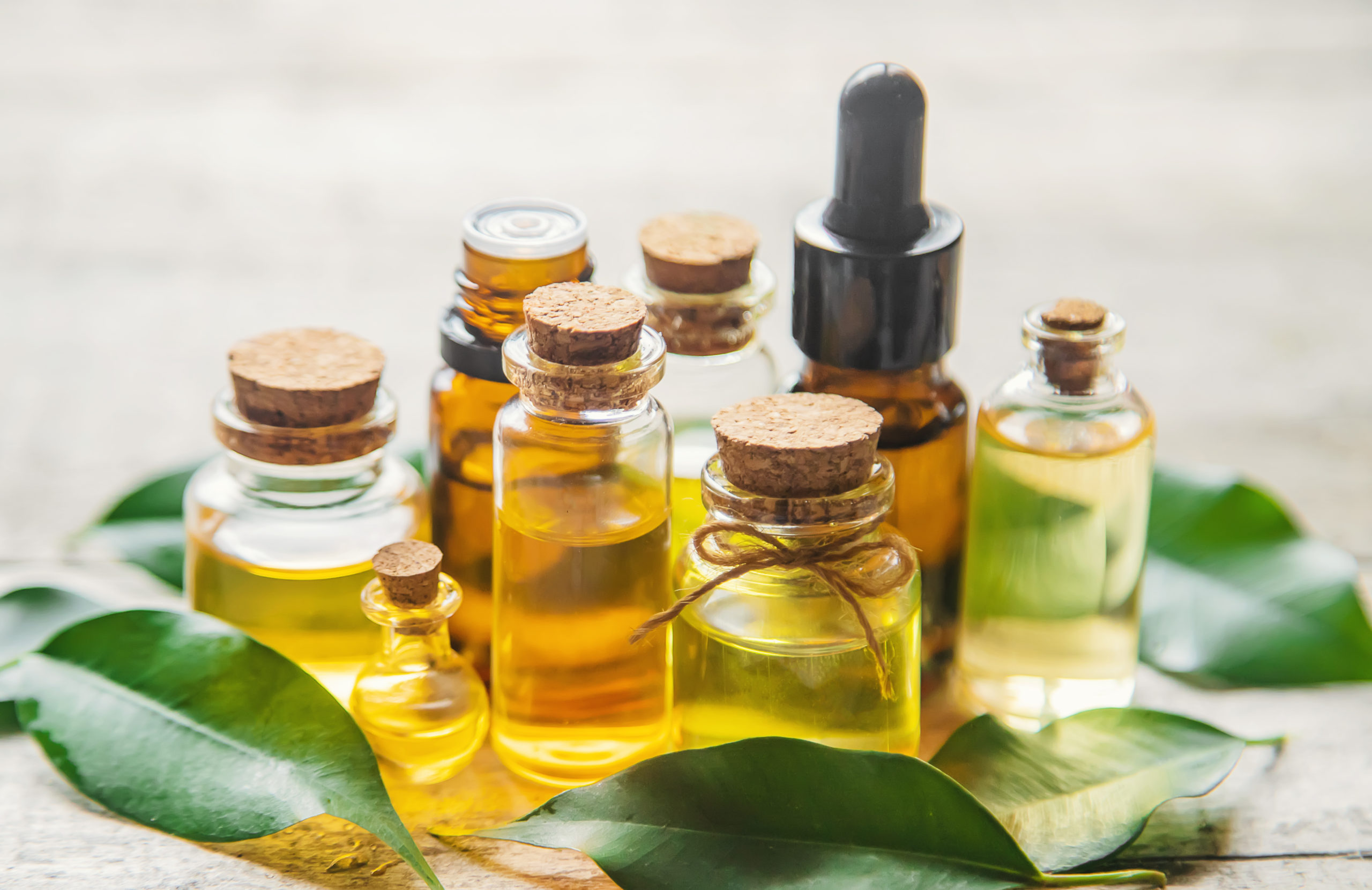Want a natural way to ease your pain? Essential oils may offer the relief you’re looking for.
Essential oils are natural compounds found in the petals, stems, roots, and bark of plants. They’re typically removed from the plant though steam distillation.
Each type of oil has its own unique scent and benefits, and oils can be used individually or as blends.
The oils resulting from this centuries-old technique may improve physical, emotional, and mental wellbeing.
Essential oils for pain relief
Researchers have found evidence to suggest that some oils may help treat the symptoms of certain ailments, such as:
inflammation
headaches
depression
sleep disorders
respiratory problems
More research is needed to fully understand how essentials oils can work for pain management, although there’s generally no harm in adding essential oils to your current pain management plan. Still, always talk to a healthcare practitioner to make sure essential oils are right for you.
The following essential oils may help with pain relief:
lavender
rose
bergamot
wintergreen
peppermint
rosemary
eucalyptus
chamomile
clary sage
ginger
clove
lemongrass
frankincense
Lavender
According to a 2013 study, lavender essential oil may help treat pain in children after a tonsillectomy. Children who inhaled the scent of lavender were able to reduce their daily dose of acetaminophen, or Tylenol, post-surgery.
Researchers in a 2015 found that lavender essential oil can be an effective pain reliever and anti-inflammatory.
When diluted lavender essential oil was applied topically during one test, it provided pain relief comparable to that of the prescription medication tramadol. This suggests that lavender could be used to help treat pain and any associated inflammation.
Another study in 2012Trusted Source tested lavender essential oil’s ability to reduce pain in people who experience migraines. Results showed that inhaling the scent of lavender was effective in lessening the severity of migraine headache symptoms.
Rose oil
Many women experience abdominal cramping during menstruation.
Rose essential oil has been shown to relieve pain associated with periods when paired with conventional treatment.
Research from 2013Trusted Source suggests that rose oil aromatherapy may also be effective in alleviating pain caused by kidney stones when coupled with conventional therapy.
Bergamot
The results of a 2015 study found bergamot essential oil to be successful in reducing neuropathic pain, usually caused by chronic nerve disease. This type of pain is often resistant to opioid pain medications.
Wintergreen and peppermint
Wintergreen oil (methyl salicylate) and peppermint oil (menthol) produce a cooling and tingling sensation when applied topically, which may be why they are two of the main active ingredients of Bengay and Icy Hot pain relieving ointments.
According to 2014 , both may offer an alternative to pain medications with fewer risks, though overall research on wintergreen oil for pain relief is mixed.
Research on peppermint is more favorable. For instance, a 2019 found that peppermint oil tablets improved symptoms including difficulty swallowing and non-cardiac chest pain.
A 2015 found that applying a gel with menthol for migraine relief resulted in a significant improvement by at least one severity level two hours after application.
Rosemary
A 2015 in mice concluded that rosemary had therapeutic potential for pain management in combination with analgesic drugs.
An older 2007 of stroke survivors with shoulder pain showed a 30 percent reduction in pain in those who received a rosemary oil blend with acupressure for 20 minutes twice daily.
Eucalyptus
Many popular over-the-counter (OTC) creams and ointments use eucalyptus to soothe pain, including Icy Hot.
A 2021 study on animals found that eucalyptus can be an effective pain reliever and anti-inflammatory at doses of 100, 200, and 400 milligrams per kilogram of body weight.
Chamomile
In a 2015 researchers that chamomile essential oil significantly reduced the need for pain relief medication in individuals with osteoarthritis compared to a control group.
A 2017 of individuals with carpal tunnel syndrome found that after four weeks of applying topical chamomile oil, symptom severity scores in the treatment group were significantly lower than the placebo group.
Clary sage
A small 2012 looked at 48 women who experienced painful menstruation and cramps and applied a cream containing clary sage oil and other essential oils to their lower abdomens daily between menstrual cycles. The women who used the cream had a significant reduction in menstrual cramps compared to the control group.
Ginger
A 2019 review noted that ginger oil has several therapeutic properties, including:
pain relief
pain receptor blocking
reducing inflammation
anticancer
relieving cough
Clove
Clove oil has been found to be beneficial for tooth ache as well as general pain.
An older 2006 noted that clove oil may be effective as a topical anesthetic.
Lemongrass
A 2017 study on people with rheumatoid arthritis found that topical lemongrass oil decreased arthritis pain from 80 to 50 percent on average within 30 days.
According to a 2011 study, native Australian lemongrass may relieve pain caused by headaches and migraine due to a compound called eugenol that may be similar to aspirin.
A 2012 study on mice found that lemongrass essential oil helped prevent gastric ulcers, a common cause of stomach pain.
Frankincense
A 2011 showed some support for the historical use of frankincense oil for inflammation and pain.
A 2014 study on animals noted that frankincense could be helpful for arthritis, though more human studies are needed.
Essential oil blends
Researchers in a 2012 found a blend of essential oils to be effective in decreasing menstrual pain in terms of severity and duration. Participants used a cream containing lavender, clary sage, and marjoram to massage their lower bellies daily.
According to another study in 2013Trusted Source, an essential oil blend was successful in reducing discomfort and menstrual bleeding. Participants were massaged with a blend of cinnamon, clove, rose, and lavender in sweet almond oil. They were massaged once daily for seven days before their periods.
Another showed the potential of an essential oil blend to lessen pain and reduce depression in people with terminal cancer. These participants had their hands massaged with bergamot, lavender, and frankincense in sweet almond oil.
Massage
Massaging diluted essential oil into the skin can help to loosen up muscles and alleviate pain.
You can practice self-massage or opt for a professional massage using essential oils.
Just make sure to dilute the oil in a carrier oil first!
Inhalation
Add a few drops of your chosen essential oil to a diffuser and inhale the steam in a closed room. No carrier oil is necessary for this method.
If you don’t have a diffuser, try this method:
Fill up a bowl or plugged sink with hot water.
Add a few drops of essential oil to the water.
Lean over the bowl or sink.
Cover your head with a towel.
Inhale the steam.
Continue for up to 10 minutes.
Hot bath
You may also take a hot bath with essential oils.
Risks and warnings
Always use caution when trying a new essential oil. Take care to dilute essential oils in a carrier oil such as olive oil or sweet almond oil
Talk to your doctor before use if you:
are pregnant
are nursing
have an existing medical condition
wish to use essential oils on children or older adults
Potential side effects of using essential oils include:
skin irritation
skin inflammation
sun sensitivity
allergic reaction
If you want to start using essential oils, do your research first. The National Aromatherapy Association is a good place to start. It’s important to be aware of the unique benefits and risks associated with each type of oil.
You also want to buy from a reputable brand. The FDA doesn’t regulate essential oils, so the ingredients in each product can vary across manufacturers. Some essential oils or oil blends may contain added ingredients that can cause adverse side effects.
Be sure to:
Always dilute oils before applying to your skin.
Perform a skin patch test to check for any irritation or inflammation.
Avoid applying essential oils to sensitive areas, such as around your eyes or near open wounds.
Discontinue use if you experience any irritation or discomfort.
Never ingest essential oils.






